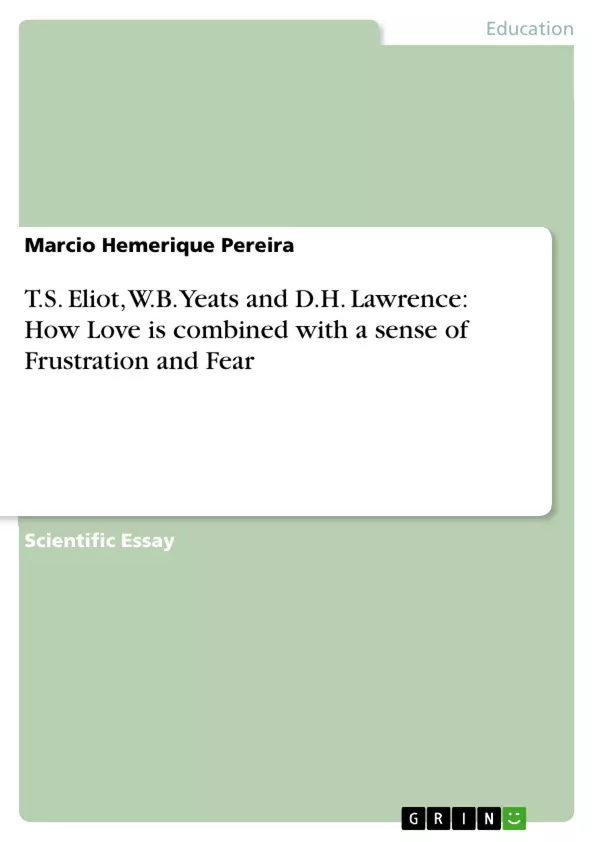This is an essay analyzing and comparing the works of three different poets and the poems used in this essay are about love in relation to a sense of frustration and fear. We will give an overview on the works of the following poets D. H. Lawrence, W. B. Yeats, and T. S. Elliott in order to make the essay more comprehensive.
Inhaltsverzeichnis (Table of Contents)
- BACKGROUND
- FROM ANALYSIS TO COMPARISON
- CONCLUSION
Zielsetzung und Themenschwerpunkte (Objectives and Key Themes)
This essay explores the themes of love, frustration, and fear in the poetry of D.H. Lawrence, W.B. Yeats, and T.S. Eliot. The essay analyzes how these poets express these emotions through various poetic devices, such as imagery, symbolism, and subjective reflections. The essay also examines the role of women in the poets' works, focusing on how they are portrayed as icons of seduction, passion, and love.
- Love and its relation to frustration and fear
- The use of imagery and symbolism to convey emotion
- Subjective reflections and personal emotional experiences in poetry
- Women as icons of seduction, passion, and love in poetry
- Modernism in poetry
Zusammenfassung der Kapitel (Chapter Summaries)
- BACKGROUND: This section introduces the essay's subject matter, discussing the role of love in poetry and the challenges of interpreting poets' emotions. It introduces the three poets being analyzed – D.H. Lawrence, W.B. Yeats, and T.S. Eliot, and their shared modernist approach to poetry.
- FROM ANALYSIS TO COMPARISON: This section delves into the techniques employed by poets to make their poems effective, highlighting the importance of imagery and symbols. It analyzes Lawrence's poetry, specifically examining how he uses imagery and symbolism, particularly in his poems "On That Day" and "The Appeal," to express his emotional complexities surrounding love, loss, and frustration. The analysis explores how these poems evoke feelings of fear and the ephemeral nature of love.
Schlüsselwörter (Keywords)
The main keywords and focus topics of this essay include love, frustration, fear, poetry, D.H. Lawrence, W.B. Yeats, T.S. Eliot, modernism, imagery, symbolism, subjective reflections, and the role of women in poetry.
- Citation du texte
- MA Marcio Hemerique Pereira (Auteur), 2009, T.S. Eliot, W.B. Yeats and D.H. Lawrence: How Love is combined with a sense of Frustration and Fear, Munich, GRIN Verlag, https://www.grin.com/document/153429



